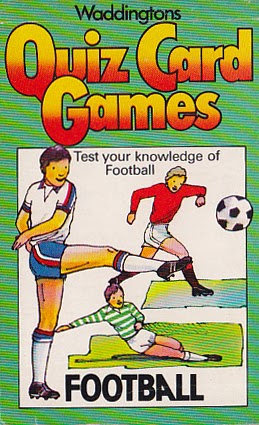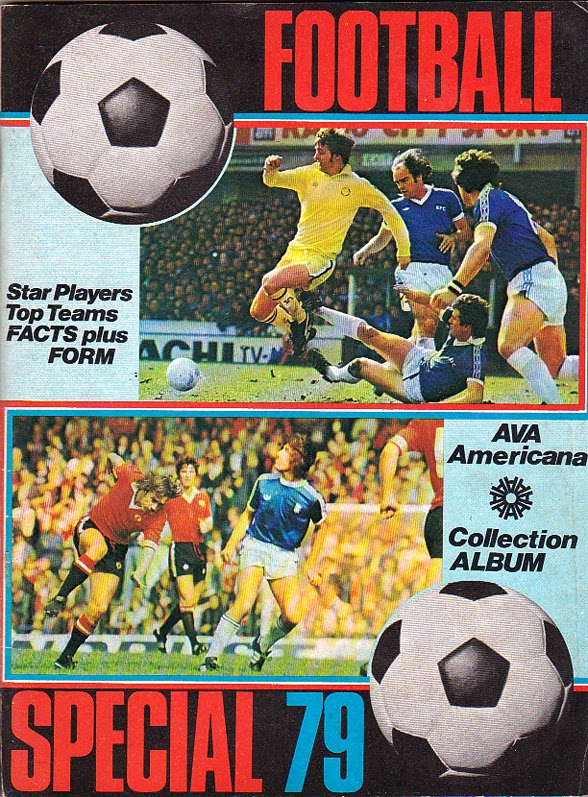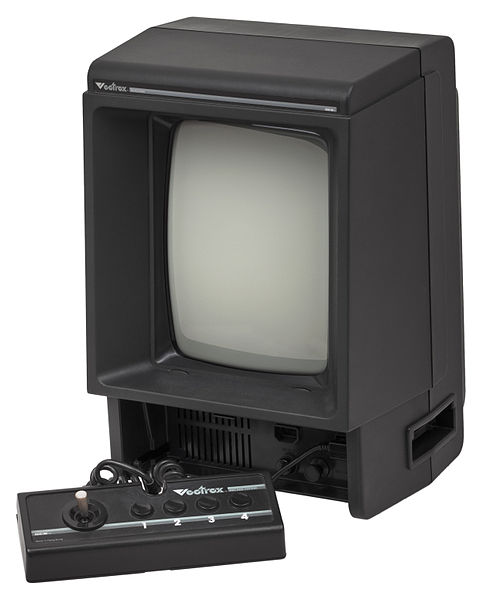Mention the name 'Panini' to anyone and the word they're likely to associate it with is 'stickers.' An understandable association, given the many thousands of self-adhesive pictures the Italian company had churned out by the late 1980's. Not all of their collectable pictures were sticky, however. Not even tacky. Having said that, Panini's Soccer Superstars album did use the words 'crucial' and 'wicked' on the cover, so tackiness was never too far away.
In 1988, Panini sticker albums were still a mainstay of many a schoolboy's juvenile life, but already the allure of home computers was becoming something of a distraction. Not only that, but after over a decade the novelty of collecting stickers was no doubt starting to wear off a little, sad though it is to say it. Luckily Panini have always had the ability to innovate, and in this special set they kept the collecting bug alive with this curious football sticker/picture card hybrid.
As detailed on the back cover of the album - sorry, 'display folder' - there were 96 cards to collect, available, as ever, from your local newsagent. At this point, Panini connoisseurs might have dropped their doubles at such a low number compared to the 500 or more stickers featured in their annual 'Football' albums. The reason for such a low number was because of the medium used - card. The folder was made up of seven sheets of card, and the collectable images were made of card. Put any more pages in the folder and the damn thing wouldn't have folded at all.
As it is, this wasn't a serious problem because this was Panini offering something different - a modern-day equivalent to those dusty old albums your granddad owned containing cigarette cards of the late, great Tom Finney and Stanley Matthews. Each double-page spread of Soccer Superstars had diagonal slots where each corner of your picture cards had to be slotted in. A refreshing change from the peel-and-stick nature of Panini's other collections, although the downside was that the front cover of your display folder ended up with lots of white triangles all over it.
Another difference between this album (sorry, I can't keep up this 'display folder' nonsense any longer) and it's once-a-year sticker equivalents was in the layout of the pages. Instead of players being displayed as part of their respective clubs, here they were shown off as fine examples of their respective playing positions. Mind you, even that was turned on its head by Panini. No double page spread on 'Goalkeepers' here - instead, these were 'Custodians.' Similarly midfielders were labelled 'Playmakers' before inspiration ran out altogether for the 'Defenders' and 'Strikers' sections.
Titles aside, each page simply contained half a dozen pictures of the top players of the era, along with a short summary describing their career and other notable facts. Some of the text was on point - David Seaman "tipped by many as a future England goalkeeper" - while other passages were, well, let's just say... 'interesting'. John Lukic, we were told, was "probably the only Arsenal goalkeeper ever to speak fluent Serbo Croat". That must have come in handy...
The centre pages of the album were undoubtedly the high point of the collection with a focus on World Stars, but genuine stars seemed a little thin on the ground at the time. Yes, there was Maradona, Gullit, Van Basten and Voller, but Portugal's Dito looked slightly out of place, and though Jean-Marie Pfaff was undoubtedly a good goalkeeper, his place might have been better taken by Rinat Dasayev of the Soviet Union in my humble view.
Still, all that was just half of the deal because Soccer Superstars had a clever selling point up its sleeve because each picture card had a peel-off sticker on its back. Adhere the stickers to the poster that came free with the album and you'd be able to build "giant colour pictures of four of the most crucial stars in the collection."
Quite who they were remains something of a mystery because two of the stickers seemed to come up far more often than the others - one showing a hand and the other showing a pair of feet. As for the poster, they're similarly elusive as anyone trying to find one on eBay will testify. Though the albums and cards are attainable, the posters, sadly, have become separated from their main publication in all too many cases.
Detatched or complete, this is an interesting collection from Panini that shows its ability to reinvent its output for many of its avid followers. Old-fashioned football cards they may have been, but Panini showed they could still produce wicked stuff, even with the 1990's just around the corner.
In 1988, Panini sticker albums were still a mainstay of many a schoolboy's juvenile life, but already the allure of home computers was becoming something of a distraction. Not only that, but after over a decade the novelty of collecting stickers was no doubt starting to wear off a little, sad though it is to say it. Luckily Panini have always had the ability to innovate, and in this special set they kept the collecting bug alive with this curious football sticker/picture card hybrid.
| One of three 'checklist' cards from the set |
 |
| 'Custodians'? |
Another difference between this album (sorry, I can't keep up this 'display folder' nonsense any longer) and it's once-a-year sticker equivalents was in the layout of the pages. Instead of players being displayed as part of their respective clubs, here they were shown off as fine examples of their respective playing positions. Mind you, even that was turned on its head by Panini. No double page spread on 'Goalkeepers' here - instead, these were 'Custodians.' Similarly midfielders were labelled 'Playmakers' before inspiration ran out altogether for the 'Defenders' and 'Strikers' sections.
Titles aside, each page simply contained half a dozen pictures of the top players of the era, along with a short summary describing their career and other notable facts. Some of the text was on point - David Seaman "tipped by many as a future England goalkeeper" - while other passages were, well, let's just say... 'interesting'. John Lukic, we were told, was "probably the only Arsenal goalkeeper ever to speak fluent Serbo Croat". That must have come in handy...
 |
| 'Playmakers'? |
The centre pages of the album were undoubtedly the high point of the collection with a focus on World Stars, but genuine stars seemed a little thin on the ground at the time. Yes, there was Maradona, Gullit, Van Basten and Voller, but Portugal's Dito looked slightly out of place, and though Jean-Marie Pfaff was undoubtedly a good goalkeeper, his place might have been better taken by Rinat Dasayev of the Soviet Union in my humble view.
Still, all that was just half of the deal because Soccer Superstars had a clever selling point up its sleeve because each picture card had a peel-off sticker on its back. Adhere the stickers to the poster that came free with the album and you'd be able to build "giant colour pictures of four of the most crucial stars in the collection."
 |
| Panini 'body part' stickers |
Detatched or complete, this is an interesting collection from Panini that shows its ability to reinvent its output for many of its avid followers. Old-fashioned football cards they may have been, but Panini showed they could still produce wicked stuff, even with the 1990's just around the corner.









































































































